Ancient Corinth Travel Guide
Introduction
Ancient Corinth Travel Guide : Corinth (Greek Κορινθία) is an ancient city west of Athens on the narrow stretch of land that joins the Peloponnese to the mainland of Greece. Corinth was an important city in ancient Greece and it played a major role in the missionary work of the Apostle Paul. Today, Corinth is the second largest city in the Peloponnese with several sites of interest to pilgrims and tourists. Only an hour (about 78 km / 48 miles) away from the bustling city of Athens, Corinth is a Greek getaway destination that is easy to access, lively and diverse. Here, we have created the ultimate guide to Ancient Corinth, consisting of the best things to see and do in the city that combines history, culture, and entertainment but also historical facts and mythological tales. We will dig deeper into the History of Corinth and will discover what was Corinth known for in the ancient times as well as the History of the King of Corinth. Corinth was one of the most important ancient Greek city-states in the whole region of Greece. With a history stretching across the span of around 8000 years, it is safe to say that it played an important role not just in Greek history, but in world history as well.
Brief History of Corinth
The site of ancient Corinth was first inhabited in the Neolithic period (5000-3000 BC), and flourished as a major Greek city from the 8th century BC until its destruction by the Romans in 146 BC. Its commanding position on the Isthmus of Corinth, the narrow strip of land that separates the Peloponnese from northern Greece, was the primary basis of its importance. Corinth controlled the diolkos (Greek for “haul across”), the 6th-century BC stone-paved roadway that connected the Saronic Gulf with the Gulf of Corinth. This overland route was highly valuable in that it allowed passengers and cargo to avoid the difficult and time-consuming trip around the southern end of the Peloponnese. Being a leading naval power as well as a rich commercial city enabled ancient Corinth to establish colonies in Syracuse on the island of Sicily and on Corcyra (modern Corfu). These colonies served as trading posts for the richly ornamental bronze works, textiles, and pottery that Corinth produced. Beginning in 582 BC, in the spring of every second year the Isthmian Games were celebrated in honor of the sea god Poseidon. The Doric Temple of Apollo, one of Corinth’s major landmarks, was constructed in 550 BC at the height of the city’s wealth.
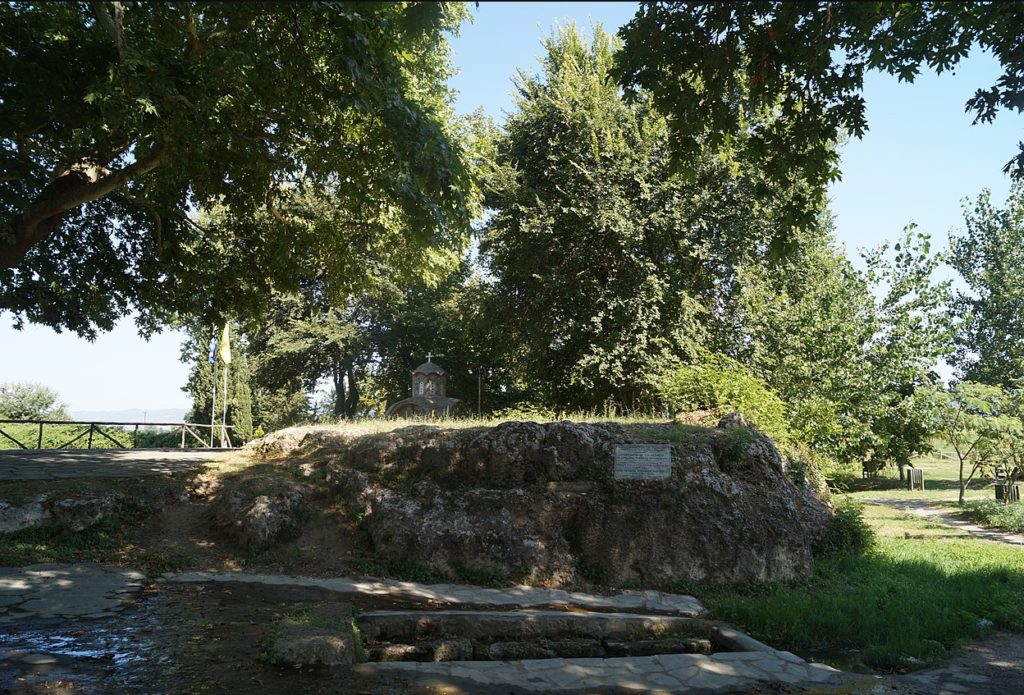
Corinth was conquered by Philip II of Macedon in 338 BC, but it was named the meeting place of Philip’s new Hellenic confederacy. After Philip was assassinated, Alexander the Great immediately came to Corinth to meet with the confederacy, confirm his leadership, and forestall any thoughts of rebellion. At the Isthmian Games of 336 BC, the Greeks chose Alexander the Great to lead them in war against the Persians. Corinth was partially destroyed by the Romans in 146 BC, but in 44 BC it was rebuilt as a Roman city under Julius Caesar. Roman Corinth prospered more than ever before and may have had as many as 800,000 inhabitants by the time of Paul. It was the capital of Roman Greece, equally devoted to business and pleasure, and was mostly populated by freedmen and Jews. The Apostle Paul visited Corinth in the 50s AD and later wrote two letters to the Christian community at Corinth (the books of 1 and 2 Corinthians in the New Testament). When Paul first visited the city (51 or 52 AD), Gallio, the brother of Seneca, was proconsul of Corinth. Paul lived in Corinth for 18 months (Acts 18:1-18), working as a tentmaker and converting as many Jews and pagans as he could. Here he first became acquainted with Aquila and Priscilla, who became his fellow-workers. Although Paul intended to pass through Corinth a second time before he visited Macedonia, circumstances were such that he first went from Troas to Macedonia before stopping at Corinth for a “second benefit” (2 Corinthians 1:15). This time he stayed in Corinth for three months (Acts 20:3). It was probably during this second visit in the spring of 58 that Paul wrote the Epistle to the Romans. Paul’s First Epistle to the Corinthians, written from Ephesus, reflects the difficulties of maintaining a Christian community in such a cosmopolitan city.
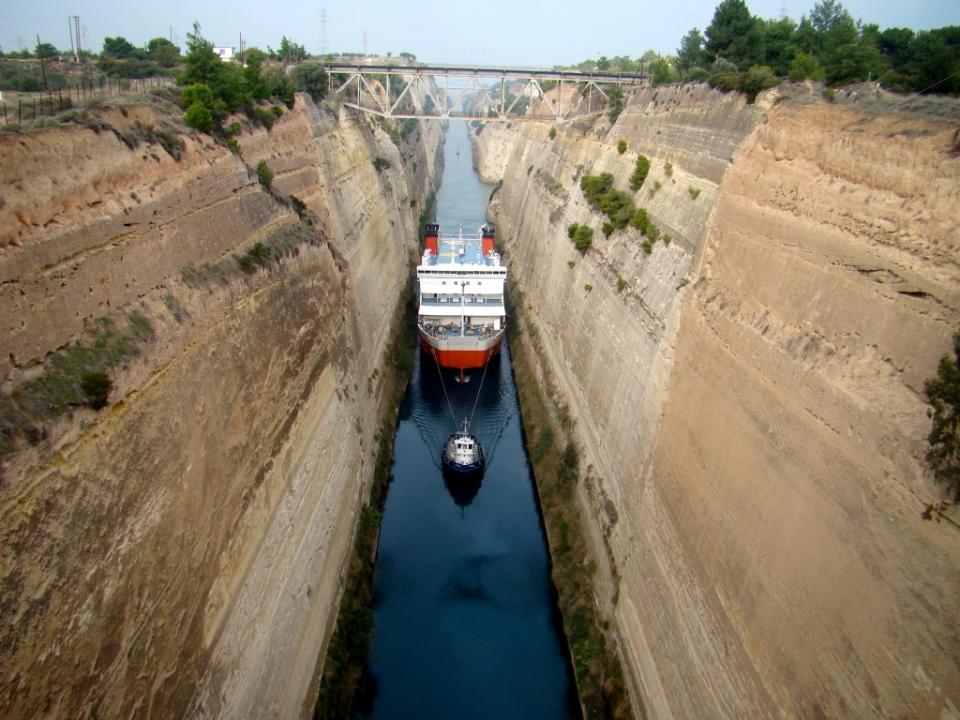
A canal through the isthmus of Corinth was begun under the emperor Nero in 67 AD. Wielding a gold shovel, Nero himself was first to break ground, but the canal was not completed. Up to the 12th century, ships were dragged on rollers across the isthmus. In 267 AD, the invasion of the Herulians initiated the decline of the city. During Alaric’s invasion of Greece in 395–396, he destroyed Corinth and sold many of its citizens into slavery. Nevertheless, Corinth remained inhabited for many centuries through successive invasions, destructions and plagues. After 1204, when Constantinople fell to the Fourth Crusade, Corinth was a prize sought by all. Corinth was captured by the Turks in 1458; the Knights of Malta won it in 1612; the Venetians took a turn from 1687 until 1715, when the Turks returned; and the city finally came into Greek hands in 1822. In 1893 a 4-mile (6-km) Corinth canal was finally completed, providing an essential shipping route between the Ionian and Aegean seas. Like its ancient predecessor, modern Corinth is the center of commerce between northern and southern Greece. Today, it has a population of about 30,000. Systematic archaeological excavations of the area, initiated by the American School of Classical Studies in 1896, are still continuing today and have brought to light the agora, temples, fountains, shops, porticoes, baths and various other monuments. The finds are exhibited in the on-site Archaeological Museum of Ancient Corinth.

Panhellenic Isthmian Games
The Isthmian Games were one of the four Panhellenic Games that existed in antiquity. Just like the Olympic Games, athletes from all over Greece were eager to participate in the Games, honoring the patron god, Poseidon. According to the legend, the founder of the Isthmian Games was Sisyphus himself and an Isthmian Truce (just like the Olympian one) was declared before the start of the festival to ensure the safe passage of the athletes to Corinth. The prize for these games were wreaths made out of celery, and later on, made out of pine. During the 2nd century BCE, Romans were allowed to take part in the festival, and eventually, the games stopped after the decision of Theodosius I in the 4th century AD. The ancient stadium of Isthmia is still preserved right next to the temple of Poseidon.
What to See at Ancient Corinth
The ruins of ancient Corinth, a short drive from the modern city of Corinth, are spread around the base of the rock of Acrocorinth, which forms a natural acropolis for the city. Most of the surviving buildings are Roman rather than Greek, dating from the city’s prosperous age after Caesar sacked and rebuilt much of the original Greek city. Much of the city has been toppled by recurring earthquakes over the centuries.
Temple of Apollo
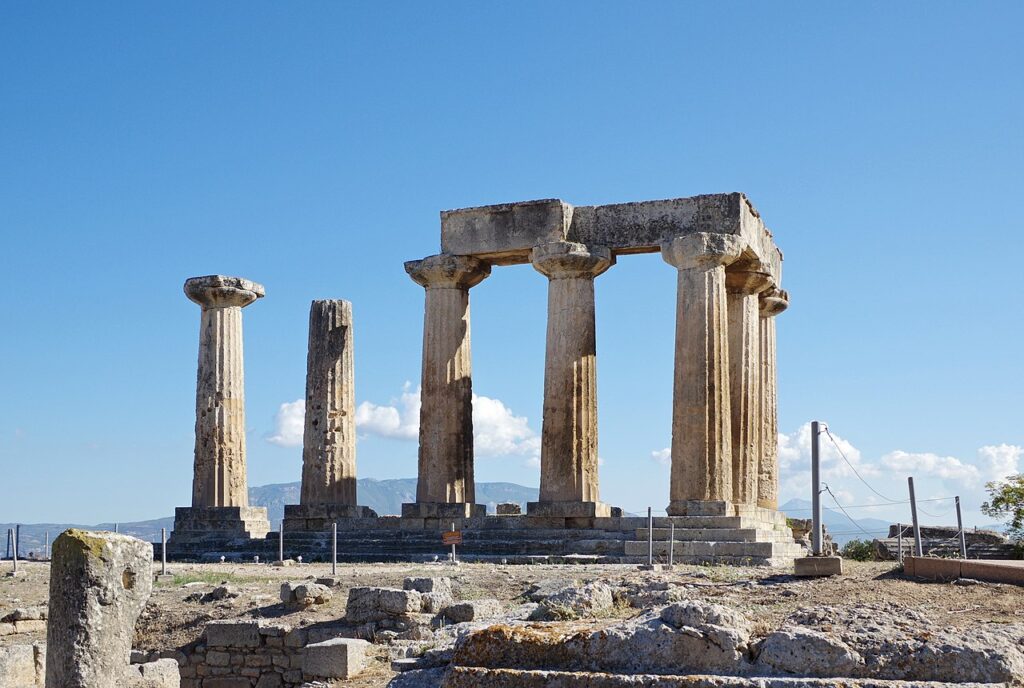
The most notable ruin of ancient Corinth is the 6th-century BC Temple of Apollo, built on a hill overlooking the remains of the Roman marketplace (agora). Seven of the original 38 Doric columns still stand, and it is one of the oldest stone temples in Greece. The temple was still functioning in the time of Paul (50s AD) but was eventually destroyed by earthquakes.
Temple of Aphrodite

The oldest building that is still visible on the surface, stands on the western and highest peak. Here stood originally the Temple of Aphrodite. The still visible elements, however, come from a Byzantine chapel built on the foundations of the temple. On the opposite peak the ruin of a Frankish tower can be seen, which was later on expanded by the Venetians and the Ottomans. Inside the fortress, especially at the foot of the western summit, there are numerous buildings from different eras. These include a Venetian church, Ottoman houses, wells, small mosques, and a Byzantine cistern. Since the buildings and walls were often constructed using ancient stones of the ruins, it is often difficult to date them precisely. To preserve the complex, numerous sections of the walls and a number of buildings were restored. The Peirene spring between the peaks was restored in 1930. In 1965 and 1966, the bridge over the moat and the guardhouse at the first tower were restored. In the 1970s, the first two towers and the sections of walls surrounding them were focused on. Further measures, such as the replacement of the wooden bridge at the entrance, were carried out between 1993 and 1995.
Temple of Octavia
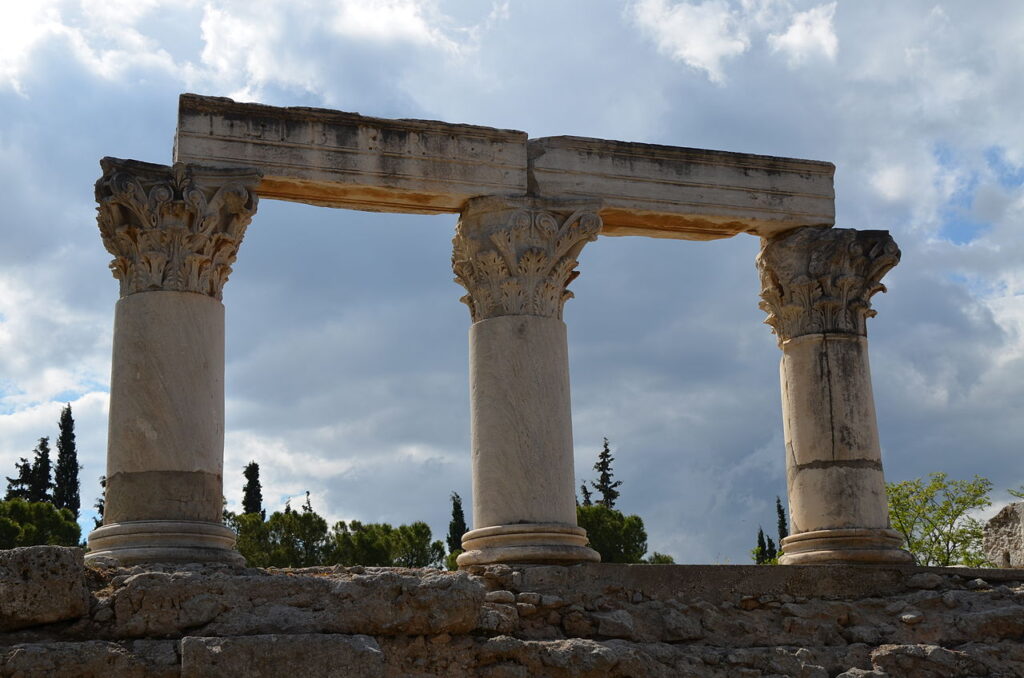
Part of the foundation and a few pillars remain of the Temple of Octavia (known to scholars as ” Temple E“), dedicated to the sister of Emperor Augustus (27 BC-14 AD). The temple represents the imperial cult of Rome, which was spread throughout the empire.
Fountains
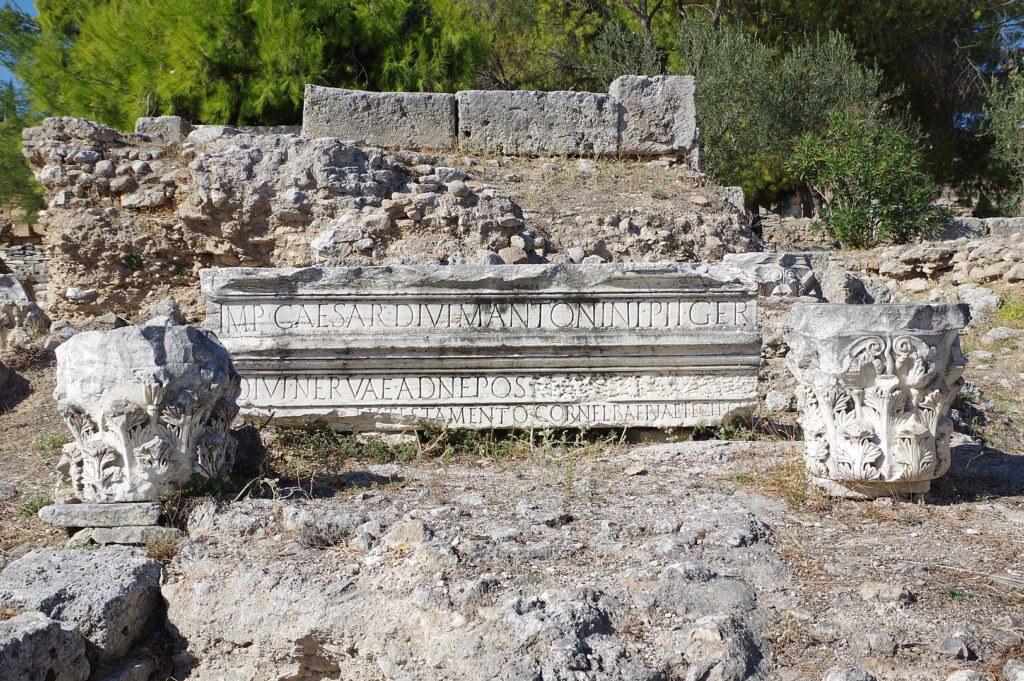
A sacred spring is located along the northern edge of the forum—near the Lechaion Road. The spring was above ground in the 5th century BC but later building activities covered it. Near the spring is a secret passage leading to a small shrine. The passage was probably used by the priests but it is unknown in exactly what capacity. Within the Roman Forum is the Bema, the public platform where St. Paul had to plead his case when the Corinthians hauled him up in front of the Roman governor Gallio in 52 AD. Significant ruins of the Peirene Fountain, the major source of water for Corinth, can still be seen today in the Roman Forum. It was an elaborate structure that served as a meeting place for Corinthians. Frescoes of swimming fish from a 2nd-century refurbishment can still be seen, and niche in the wall probably contained a statue. The fountain is named for Peirene, a woman who wept so hard when she lost her son that she finally dissolved into the spring that still flows here.
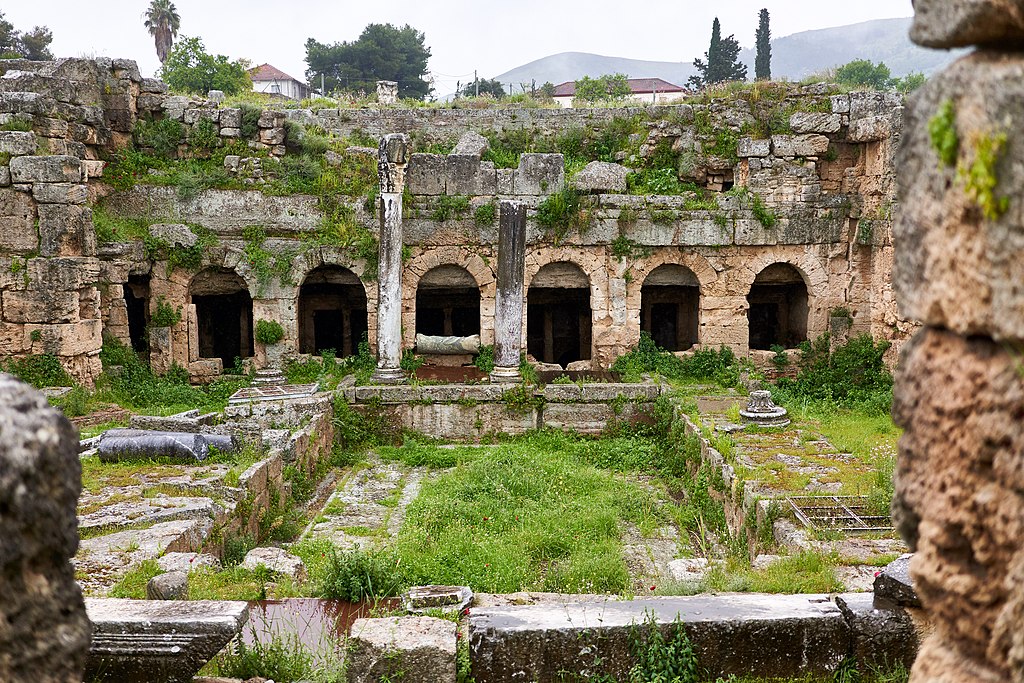
Other Ruins
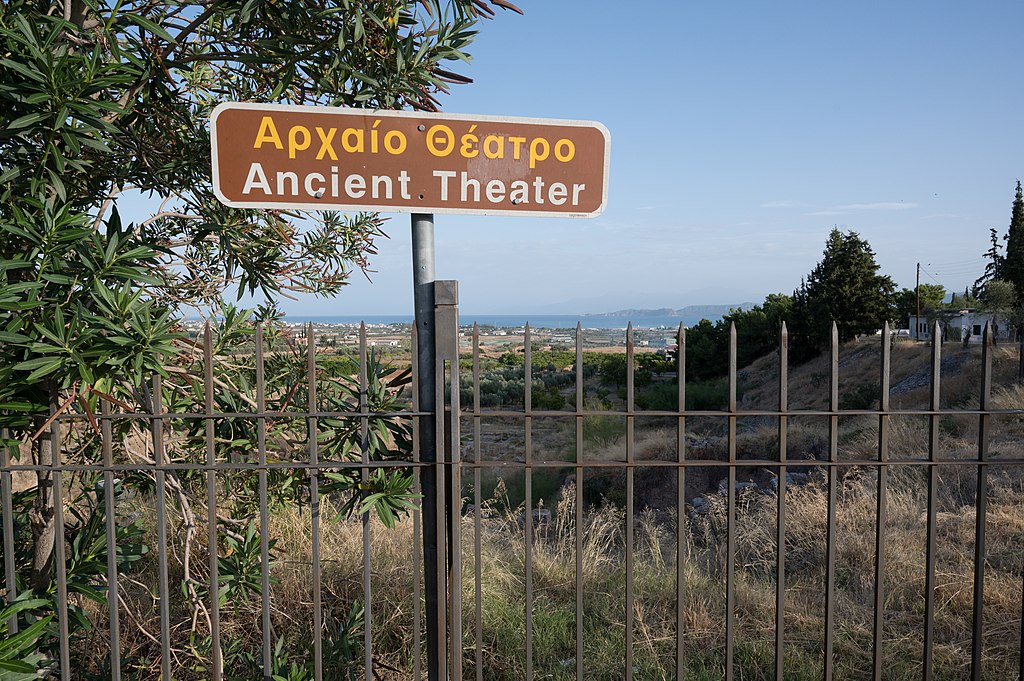
North of the Theater, inside the city wall, is the Asklepieion, the sanctuary of the god of healing with a small temple (4th century BC). It is set in a colonnaded courtyard with a series of dining rooms in a second courtyard. Terra-cotta votive offerings representing afflicted body parts (hands, legs, breasts, genitals, and so on) were found in the excavation of the Asklepieion, many of which are displayed at the museum.
Archaeological Museum of Ancient Corinth
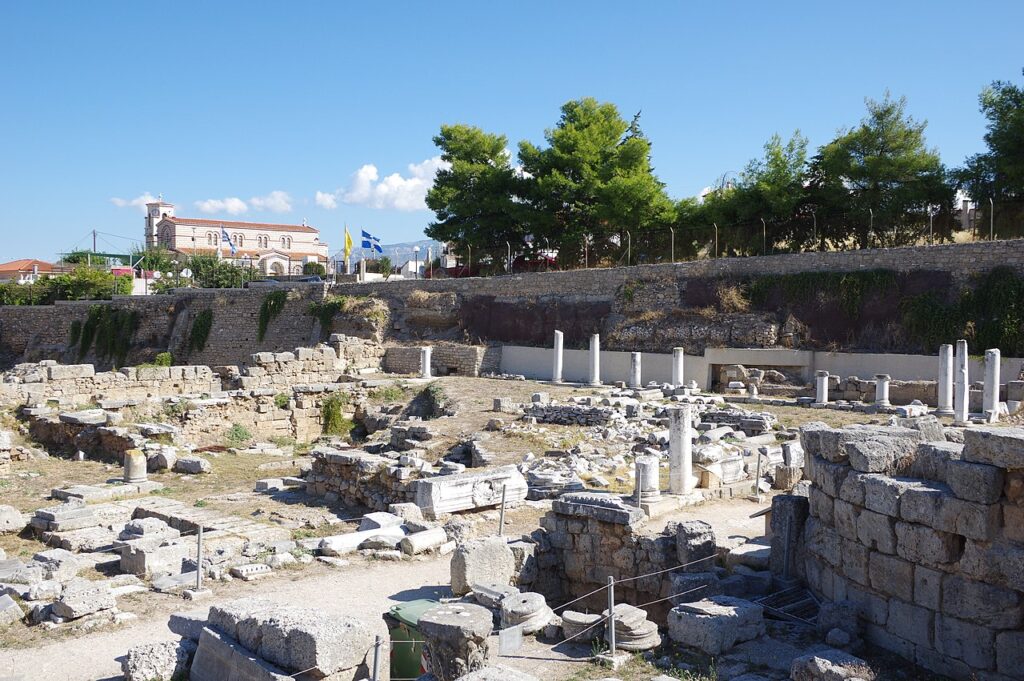
The Archaeological Museum of Ancient Corinth contains a number of artifacts of religious interest, including inscriptions of Gallio and Erastus, both mentioned in the Book of Acts; a synagogue inscription, menorah reliefs, and votive offerings of terracotta body parts to Asklepios.










